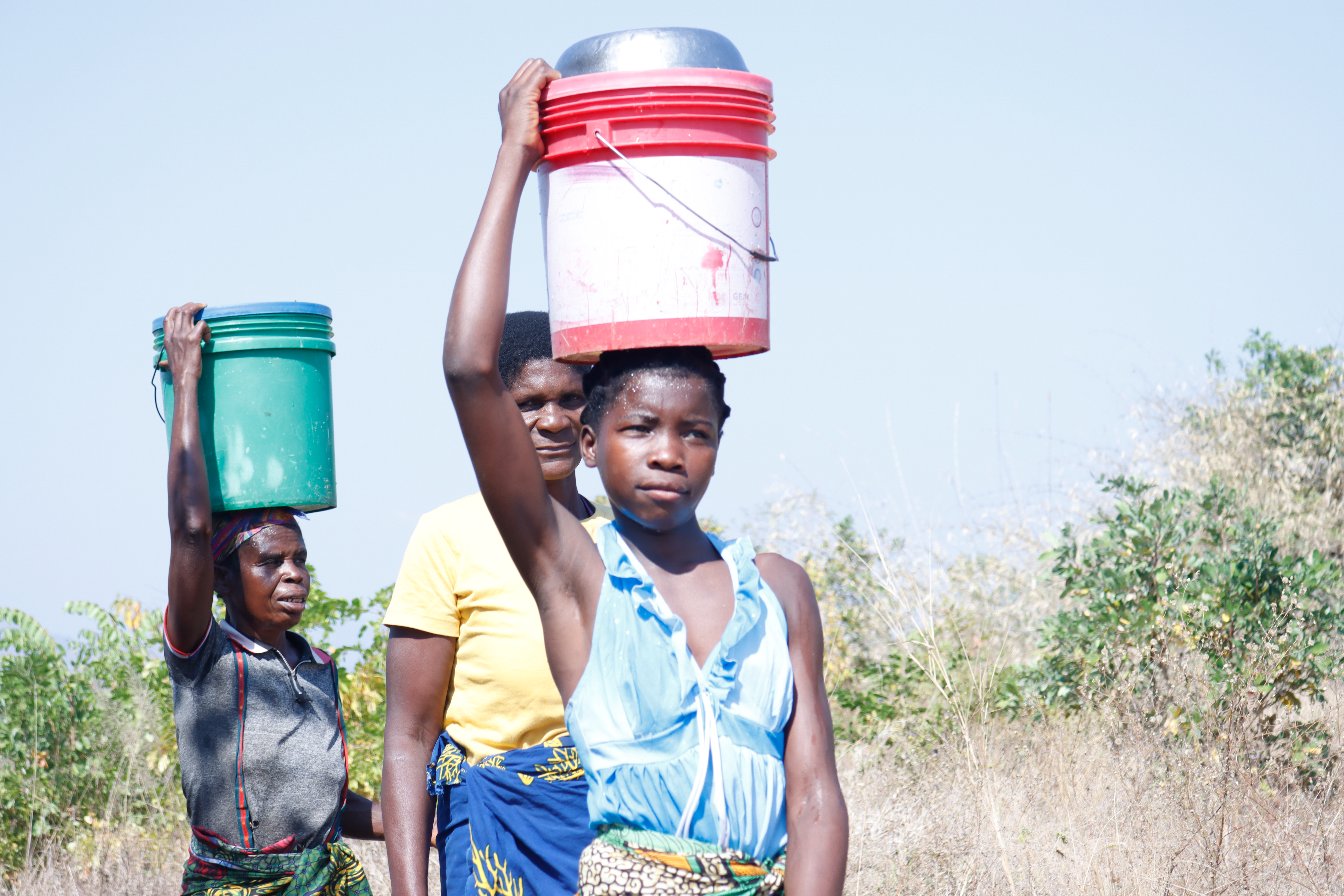New Borehole in Milange Restores Dignity and the Right to a Proper Childhood

By Benjamim Capito, Communications Coordinator
For 13-year-old Joana, from the Cadote village in the Milange district of Zambézia province, central Mozambique, life was a relentless cycle of searching for water. Enduring long distances, missing classes, and sleepless nights were her normal routine.
The people of Cadote, predominantly women and children, had long resigned themselves to these hardships. Typically, Joana would wake before dawn, as the sun began to paint the horizon, chasing away the last shadows of night. Barefoot, clutching a 10-liter container, she would hurry towards the water source, knowing other domestic chores awaited her return. Often, the two-hour walk felt lighter in the company of other girls her age, traveling in groups. Otherwise, her grandmother, Elisa, with whom she lived, would accompany her, helping to carry the heavy load back home.
Their water source was a precarious hole dug amongst rocks, requiring a steep descent to reach the rainwater collected within. During the dry season, villagers would dig deeper, desperately trying to extract water from beneath the parched soil.
“We share this water with goats because it is our only option,” Elisa explained. “Sometimes, we have to wake up at midnight to get there first. If we are late, we might wait for hours.”
When water was available, Joana would carry a few liters to Cadote Primary School, where she was in 6th grade, for basic hygiene. However, the scarcity of this precious resource rarely allowed for such luxuries.
Cadote Primary School itself operated with minimal resources and makeshift infrastructure. Lacking fences, its most prominent structure was a small hut of burnt clay bricks housing the administration. Classes were held outdoors under the shade of indigenous trees, and the latrines were simply covered with grass.

As a young teenager, Joana found attending classes during her menstrual cycle particularly discouraging and uncomfortable. The school lacked adequate facilities and access to water for proper hygiene.
“When her period comes, she stays home, especially during the first heavy days. Once the bleeding lessens, she feels more comfortable returning to school,” Joana’s grandmother shared.
The promise of a new borehole brought renewed hope for a better quality of life to this community. For days, the villagers watched with anticipation as each step of the drilling process unfolded.
“Life was difficult even for the teachers. To obtain clean water, we had to travel to other villages with boreholes or go to the Milange district headquarters to fill our containers,” said Joaquim Maronha, the head teacher of Cadote Primary School. “But now, we are confident that this new borehole will significantly improve learning conditions for our children and the lives of everyone in our community.”
The borehole at Cadote Primary School is one of 25 drilled in an equal number of schools across the Zambézia and Nampula provinces. This initiative is part of the Partnering for Sustainable Education Outcomes (PARES) project, funded by the McGovern-Dole International Food for Education and Child Nutrition Program of the United States Department of Agriculture (USDA).
This investment in infrastructure aims to promote access to clean water and improve sanitation in schools and the surrounding communities. In the Milange district alone, the PARES project has established 15 boreholes and trained Water Committees for each, with support from the District Planning and Infrastructure Service (SDPI, acronym in Portuguese).